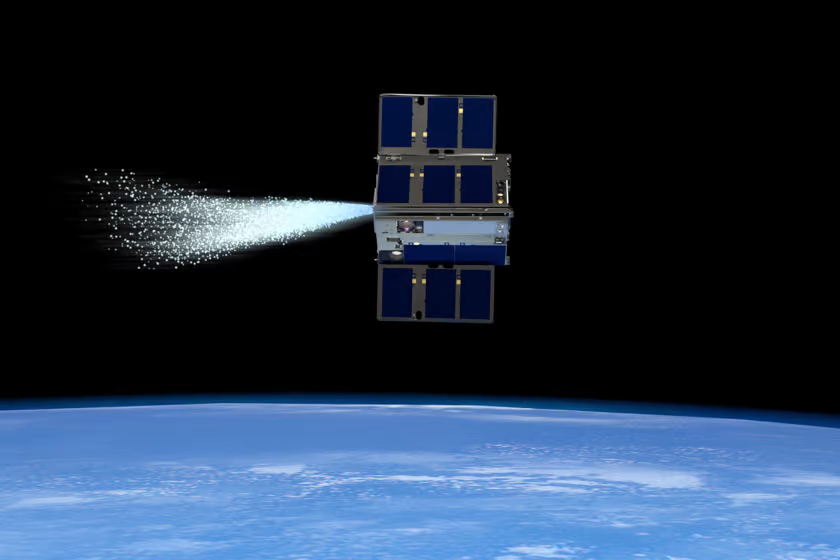For some time now, competition has been underway to replace chemical engines in spacecraft with other types of motorization. The water engine is one of the alternatives being considered, with for example the Japanese start-up Pale Blue recently proposing a new demonstration.
Chemical propulsion is currently the most reliable, powerful and widely used type of propulsion for spacecraft, but depending on the mission life, the engine and propellant, the rocket fuel, take up a lot of mass and space. To meet the needs of many smaller and smaller satellites, scientists would like to have a propulsion system that takes up less space and weight, and they are directing their research towards the development of innovative solutions using plasma, nuclear or electric propulsion, but also water vapor.
On January 3, 2023, SpaceX’s Falcon 9 rocket deployed 114 small satellites into orbit, including EYE1 or Star Sphere 1, a satellite, also known as a CubeSat, with the volume of a sixty-centimeter cube. This satellite, owned by Sony and developed in partnership with the Japanese space agency and the University of Tokyo, aims to take high-quality photos of the Earth’s surface, at the request of users.
To place itself in its final orbit, the small satellite, weighing only about ten kilos, moved with the help of an engine using water vapor as fuel. Pale Blue, the Japanese start-up that built the engine, said the first maneuvers were successful. The engine developed by the start-up works in the same way as an ion engine, accelerating ions to very high speeds.
The water vapor is accelerated by a magnetic field, which destructures the molecules and turns the water vapor into plasma, a mixture of positively charged ions and negatively charged electrons. The ions are then expelled, generating thrust, which allows the satellite to move. Ion engines, of which the water engine developed by Pale Blue is a derivative, are rapidly expanding but operate mostly with Xenon, one of the rarest and most expensive noble gases. Until now, few satellites use water vapor as fuel.
One example is the PTD-1 CubeSat, a demonstration satellite developed by NASA to test new propulsion methods for small satellites, whose engine separates water molecules into dihydrogen and dioxygen molecules before they are burned by a conventional chemical engine. Another water vapor powered satellite is the EQUULEUS satellite developed by Japan’s JAXA and the University of Tokyo that was part of the Artemis 1 mission in November 2022.



Comment here